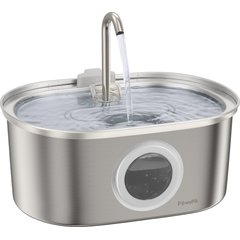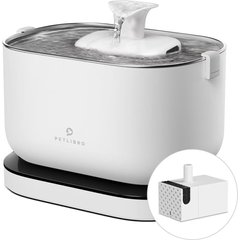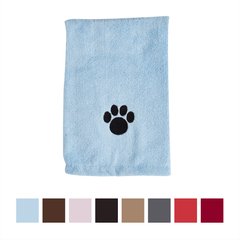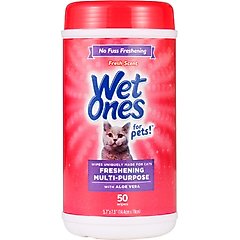Why Cats Hate Water: A Guide to Your Cat’s Worst Enemy
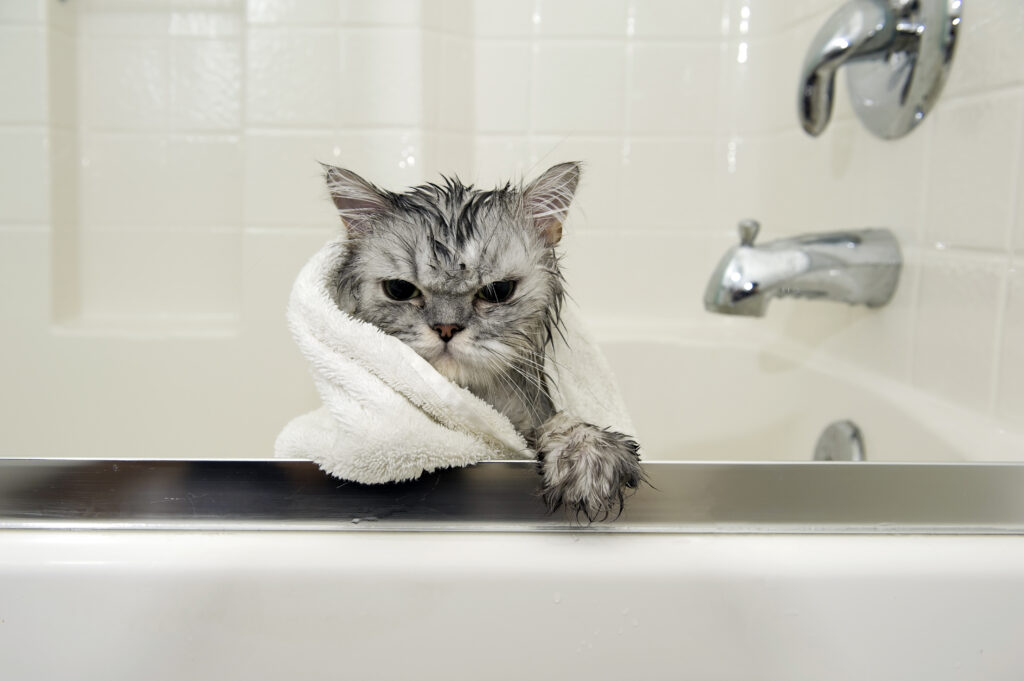
Photo by kevinjeon00 / E+
Water is a source of life for all beings, but your cat probably has a love-hate relationship with it. They’ll happily lap it up, but turn on the hose or a running shower and it’s as if they’ve met their nemesis. So, why don’t cats like water? We’re diving into this splashy mystery.
Why Do Cats Hate Water?
Cats don’t necessarily hate water, but many dislike being wet or fully immersed in it. While the definitive reason’s a bit murky, experts say we can make some educated guesses.
First, domestic cats had desert-dwelling ancestors in places where bodies of water were rare.
“They didn’t evolve with a strong need to swim or interact with water, so it feels unfamiliar—and anything unfamiliar can trigger caution or fear in cats,” explains Cristy Brusoe, a certified cat behaviorist in Tampa Bay, Florida. (This fear response is the same reason a cat may react strongly to a cucumber or a loud noise like fireworks.)
Another reason why cats hate water might be tied to trauma around it, like falling into a pool or being sprayed with a hose.
They also may dislike the way water weighs down their fur or interferes with their grooming routine.
Do All Cats Hate Water?
No, not all cats hate water. While many are naturally wary of H2O, some breeds are actually known for their love of swimming, like the Turkish Van (nicknamed the “swimming cat”), the Maine Coon, and the Bengal, Brusoe says. Even among mixed-breed cats, felines with bold or curious personalities may enjoy splashing or playing with water.
Why Wet Fur Is Uncomfortable for Your Cat
Cats don’t typically need to swim to hunt, so their coat never evolved to protect them from the water, explains Roxanne LeBrun, DVM, a veterinarian at Best Friends Animal Society in Los Angeles. They do, however, have fastidious grooming habits that could be disturbed when their fur’s damp.
“It can impact their normal oil barrier on their skin and coat, which can lead to issues like infections,” Dr. LeBrun says, noting that a wet coat may also affect their ability to maintain a comfortable body temperature.
Plus, cat whiskers are packed with nerve endings that help them detect subtle changes in their environment. When their whiskers get wet, it can create an overstimulating or uncomfortable sensation.
Aside from their fur and whiskers, cats might also dislike the loud sound of water or its forcefulness, like from a shower or hose. Lastly, when it comes to bath time and shampoos, they may not be fond of the scents involved.
Why Do Some Cats Enjoy a Little Bit of Water?
While all cats drink water to sustain themselves, some are totally enamored by a flowing water source. It’s why some cats hang out in or around the shower, run to the faucet as soon as you turn it on, or dip their paws in your water cup or bathtub.
“Some cats are naturally curious and love moving objects, and dripping or flowing water taps right into that hunting instinct,” Brusoe says. “Additionally, cats instinctively seek out fresh, running water sources in the wild, as still water can be a breeding ground for bacteria. So, playing with a faucet, shower, or even puddles is sometimes a fun mix of curiosity and instinctual behavior.”
If your cat loves running water, consider a cat water fountain to encourage them to drink.
Recommended Products
How to Help Your Cat Tolerate a Bath
Cats are excellent self-groomers, which means you don’t have to worry about giving them routine baths—in fact, they might never need one. However, some scenarios require human intervention, like falling into a muddy puddle or being sprayed by a skunk.
Start Slow and Be Patient
Gradually get your cat used to being in the bathroom and near water before introducing a full bath; even hearing running water is a great way to get them used to the sound.
When it comes time for the bath, speak softly and move slowly, and see if someone else can help.
Cat treats are also useful for making a bath a pleasant experience. Start by rewarding your cat with treats while they are in or near the bath, and gradually increase the amount of time they spend there, continuing to praise and reward them throughout.
Recommended Products
Use Shallow Water and a Mat
Fill a sink or tub with just a few inches of lukewarm water. A nonslip mat gives your cat secure footing to stand on. You can also try using a bathing station designed specifically for pets.
Recommended Product
Try a Grooming Bag
“Cat grooming bags are constructed of nylon or mesh and placed over the cat’s body with the head exposed,” Dr. LeBrun says. “They are designed to restrict some of the activity of the legs, which keeps the cat safe from flailing and the handler safe from exposed claws.”
Thoroughly Dry Them Off
To prevent that wet fur feeling, thoroughly dry your cat’s coat with multiple absorbent cat grooming towels. (Hair dryers are not recommended, as the noise is stressful and they can be too hot for your feline.)
Recommended Products
For minor messes, a damp cloth or cat grooming wipes are a less stressful solution.
Recommended Product
If you ever need a pro’s help, enlist a groomer to assist.
Attributions
This content was medically reviewed by Hannah Hart, DVM, Chewy veterinarian.
